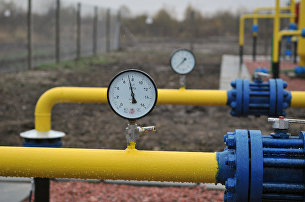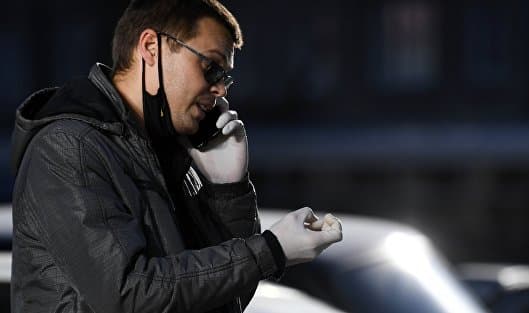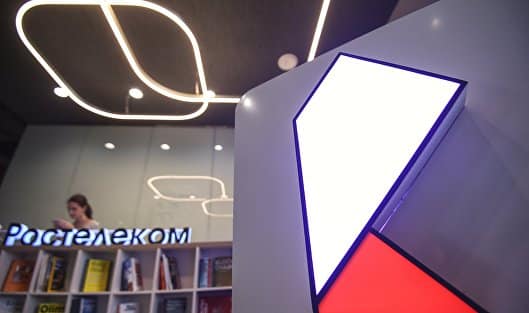MOSCOW, September 29 — PRIME, Oleg Krivoshapov. The failure of both Nord Streams as a result of the impact, which the Russian Prosecutor General’s Office has already called an act of international terrorism, actualized an important question for Europe: with what and how will the main consumer of the fuel that went through the damaged pipes pass the winter?
The US started a new game: how the whole world will pay for the growth of the dollar
DRY RESIDUE
To begin with, let’s estimate how much Russian gas remains with Europe. Aleksey Gromov, Chief Energy Director of the Institute for Energy and Finance (FIEF) Foundation, recalls that only a branch of the Turkish Stream pipeline, known as the Balkan Stream, is used to supply Russian gas to Europe. “At first glance, with the failure of Nord Stream, nothing has changed for Europe in the short term,” he argues. “The second Stream was never put into operation, pumping through the first was already suspended.” However, now that they are both physically dysfunctional, the situation takes a completely different turn.
The expert points out that deliveries via the “Balkan” branch of the “Turkish Stream” guarantee Europe only one third of the volume of energy it needs, while taking into account Ukrainian transit, this figure can reach about 50%.
In addition, Russian gas passes through Ukraine along the last route that is currently in use. Through the Sudzha GIS, Gazprom supplies about 40 million cubic meters of gas daily. The second route – GIS “Sokhanovka” ceased to function. Ukraine stopped receiving gas through it after it came under the control of Russian forces on the territory of the LPR.
PEOPLE ARE MORE IMPORTANT THAN BUSINESS
Today, according to various estimates, the share of Russian gas in the European gas market is from 10 to 20%. The volume in underground gas storages accumulated for the winter is above the average level for this time of year – about 80-90%. At the same time, this is nothing more than a reserve stock – gas is taken from there, but also pumped throughout the winter. If you do not make additional injection, it may simply not be enough, especially since pumping out of tanks when they are 10-20% full is technically difficult.
In this case, business will be the first to be hit, Gromov is sure. “In particular, gas-intensive industries will suffer, first of all, the production of nitrogen fertilizers, which is already in a difficult state,” he believes. Cement production, metallurgy, and partly heavy industry are also at risk.
If events develop according to such a scenario, Europe will face a serious prospect of a recession, the expert concludes.
At the same time, the authorities will try to lay the main burden of the difficulties associated with the lack of energy and its high cost on business, and not on the inhabitants, experts are sure. And this despite the fact that in Germany – the leading economy in Europe – the share of industry accounts for relatively little gas consumed – about 20%. Another 60-65% is consumed by households, the rest goes to electricity generation.
“It will not be possible to completely avoid the growth of tariffs,” Gromov believes. “The task of European politicians is to avoid explosive growth.” He draws attention to the fact that work is underway to mitigate the consequences of the current negative situation for the general population of European countries. An example is the initiative of the European Commission (EC) to “temporarily withdraw” excess profits from local energy companies, whose revenues in 2022 grew by more than 20% compared to the average for the last three years.
The European industry has already felt the brunt, agrees Oksana Lukicheva, commodity market analyst at Otkritie Investments. “The population is not yet suffering too much from the lack of heating, especially since European governments, under the F55 pan-European program, are actively subsidizing the transfer of the population to electricity heating, for example, by replacing gas boilers with thermopumps,” she clarifies.
Despite the high cost, the European industry will continue to follow the program of diversification of gas use. “For example, F55 involves an active shift towards the use of biomethane, as well as the development of new technologies based on hydrogen. Apparently, the Europeans have technologies for the production of “green” hydrogen – without gas – and the subsequent production of electricity,” says Lukicheva . These technologies will make it possible to produce ammonia through hydrogen without the use of gas, which, of course, will help European fertilizer producers, she is sure.
However, it should be noted that we are talking about promising developments, the implementation of which will take time. A separate issue is the cost of using such technology. And now, in the context of the high cost of natural gas, which has already led to the shutdown of individual enterprises producing nitrogen fertilizers, there is a real prospect of shutting down other capacities in this area. It is difficult to judge the scale of this process, but the result may be an even more significant rise in the price of fertilizers in Europe and on the world market as a whole.
This is now the main risk for agriculture: crops in Europe this year are worse than usual due to drought, if farmers face a shortage of fertilizers next year, the situation with food production could become critical.
In addition to the fertilizer industry, producers of non-ferrous metals, primarily aluminum and zinc, as well as the food industry, such as sugar producers, are suffering and reducing production. In the food industry, for several decades, factories have been switching to the use of biomethane technology, and also this year they began to switch to petroleum products.
THERE IS NO BAD WEATHER
The decisive factor that will determine the volume of demand for fuel in Europe will be trivial – the weather. “In the event of a cold winter, serious problems are quite possible in Europe by March,” Gromov admits.

Complete degradation. Will Ukraine survive this winter?
The main factor for the natural gas market will indeed be the weather, agrees Sergei Pravosudov, director general of the National Energy Institute. The question in this case is how cold the winter will be in the USA, Europe and Asia. “Consumption volumes will depend most of all on this,” he says. “Plus, naturally, in China and in general in Asian countries, they may again take up covid restrictions, which can also greatly affect consumption volumes.”
EXPENSIVE BARREL FROM THE SEA
An alternative to pipeline gas is liquefied gas. Fitch analysts at the beginning of September expected an increase in imports of liquefied natural gas (LNG) to Europe in 2022 to about 120 billion cubic meters, in 2023 – up to 155 billion cubic meters. At the same time, the agency’s specialists noted that their forecast was not highly reliable and could not foresee a force majeure with pipelines.
The share of LNG in Europe’s gas balance is relatively small, but it is growing. The program for Europe’s refusal of Russian gas has been implemented for several years, recalls Lukicheva. “And it includes, among other things, the construction of new LNG terminals,” she notes. “Three terminals are expected to be put into operation by the end of 2022. Two in the Netherlands and one in Finland with a total capacity of 13 billion cubic meters of gas per year.” In February-April 2023, two more terminals are expected to be put into operation – in Germany – with a capacity of 10 billion cubic meters per year, the specialist adds. Also in April 2023, Italy is expected to put into operation a terminal with a capacity of 5 billion cubic meters per year.
“The terminals will continue to be built until 2026, the total added capacity will be about 74 billion cubic meters per year,” Lukicheva from Otkritie Investments specifies.
This, as the expert explains, will not completely replace pipeline gas supplies from Russia, but will make it easier to cover the needs, especially since the program also aims to significantly reduce gas consumption in the EU. As for supply volumes, LNG will be redistributed where it is most expensive, the expert is sure. “And this, again, will rest on the question of where consumption will be more,” he argues.















